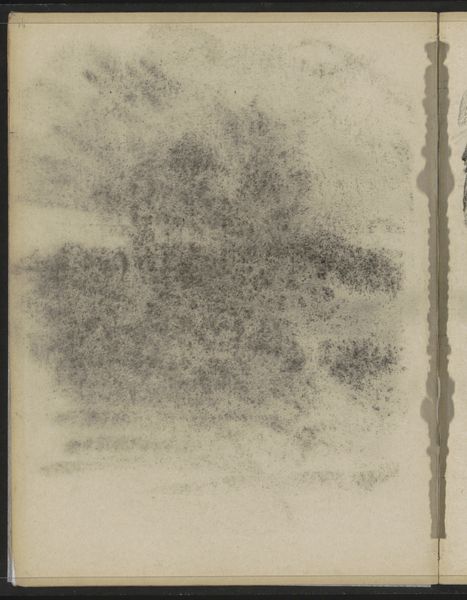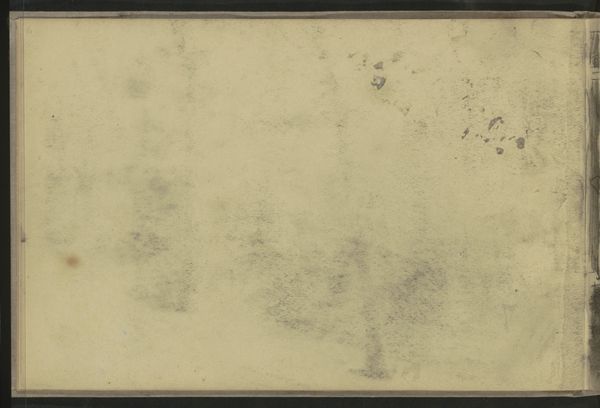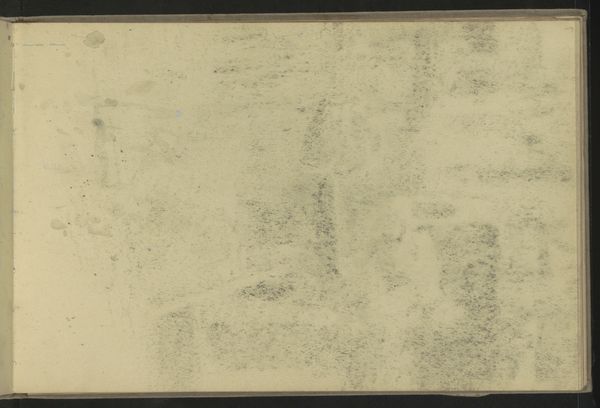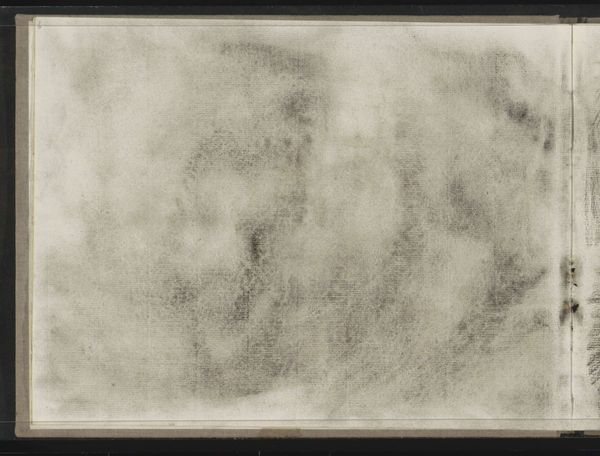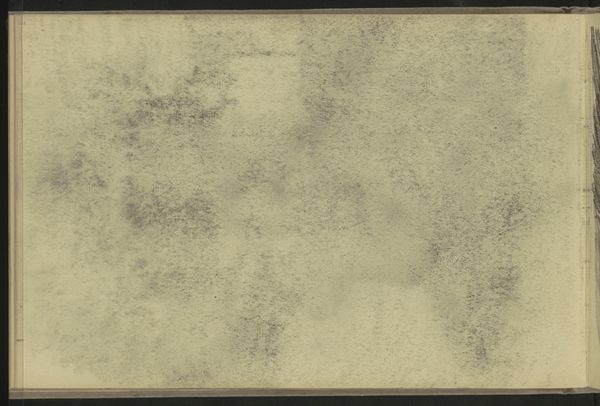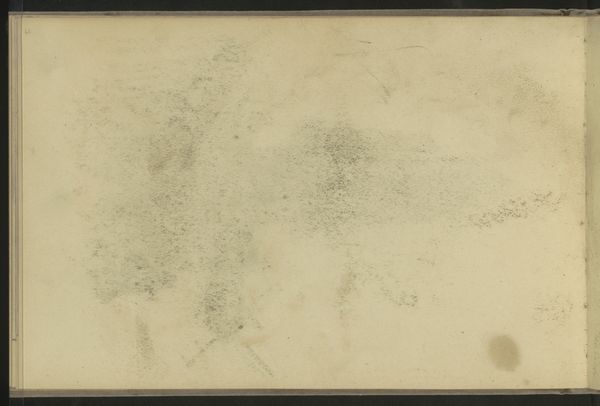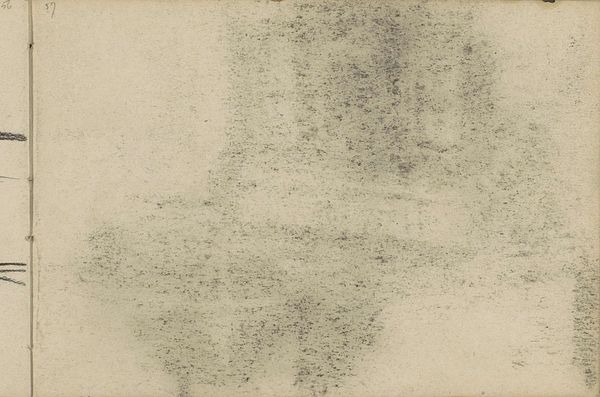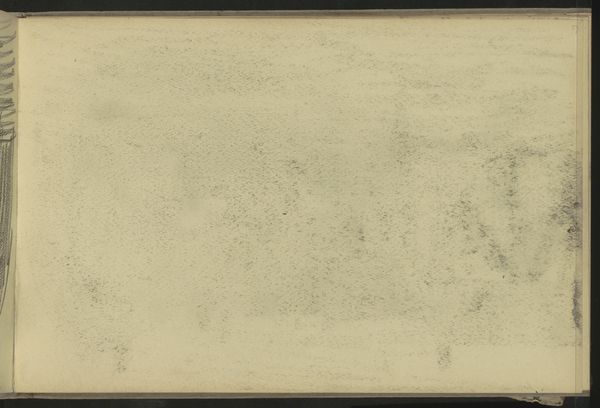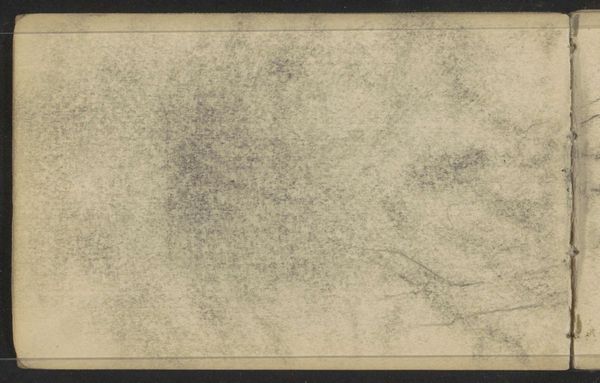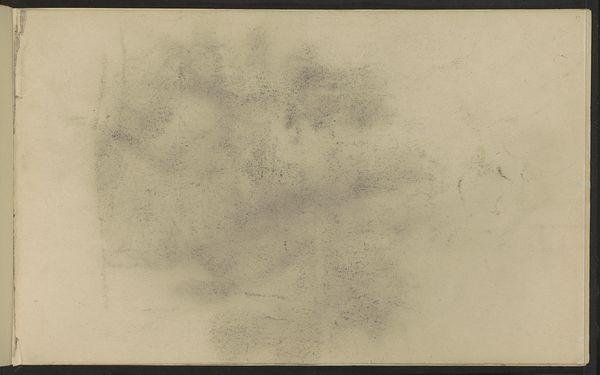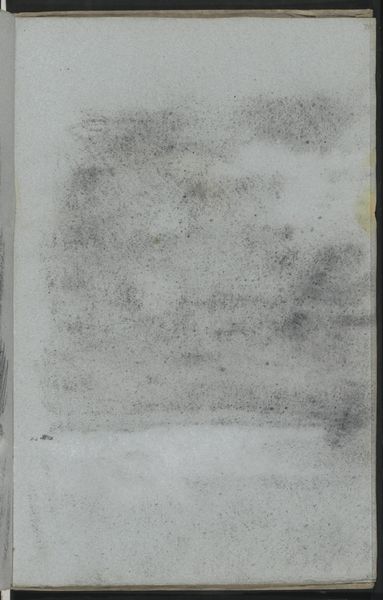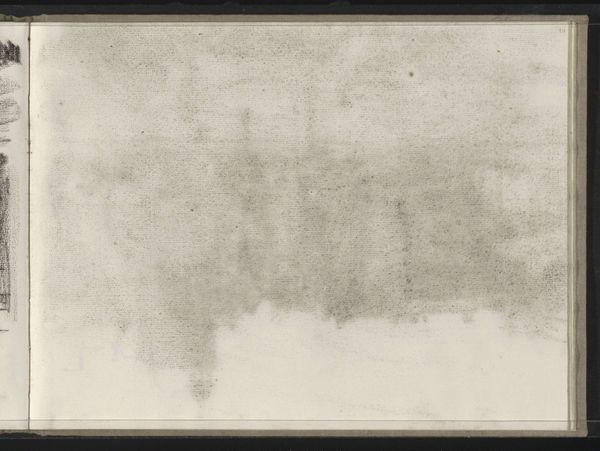
Copyright: Rijks Museum: Open Domain
Curator: Here we have "Abklatsch van de krijttekening op pagina 29", a drawing by Willem Witsen, created sometime between 1901 and 1907. It is currently housed here at the Rijksmuseum. Witsen employed charcoal and graphite in its creation. Editor: It feels… heavy. A melancholic haze seems to seep right out of the paper. The dense charcoal suggests a somber landscape. Curator: "Abklatsch," means "copy" or "impression" – which suggests an interesting exploration of reproduction. The transfer process itself, and the materiality of charcoal and graphite, all point to a deliberate focus on the physical act of creation. I am especially interested in Witsen’s specific choice of paper, which, during this period, reflected the cultural emphasis on industrial printing advancements. Editor: I'm drawn to the suggestive shapes, the way forms emerge from the gloom. The barely-there structures might indicate urban anxiety creeping into familiar scenes. Notice how it subtly recalls older traditions, those gothic symbols hinting at nature reclaiming city space, decay setting in and overwhelming construction itself? Curator: Perhaps that sense of decay resonates because of Witsen's printmaking community engagement, as well as his family connections within Amsterdam's cultural elite. We must think about his artistic labour being set against changing economies for creative producers during this transitional historical moment in Europe, the expansion of art markets, rising nationalism... it's crucial! Editor: You make a powerful case. Still, those hazy outlines keep reminding me of memories fading. It is the enduring cultural anxieties around time that draw my focus in this image. What does Witsen seek to portray? Perhaps those ever-present reminders that nothing lasts? Curator: I appreciate your insights into Witsen's deeper themes through art history! His experimentation with readily available materials allows us insight into art-making itself. Editor: And by interrogating symbolic imagery, we're able to unlock broader understandings of its resonance for future generations.
Comments
No comments
Be the first to comment and join the conversation on the ultimate creative platform.
